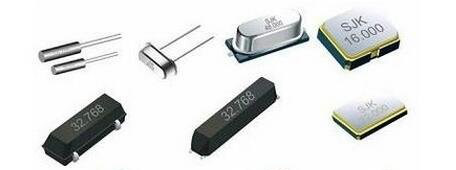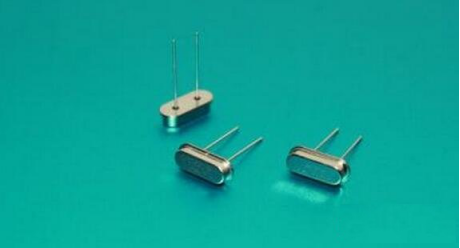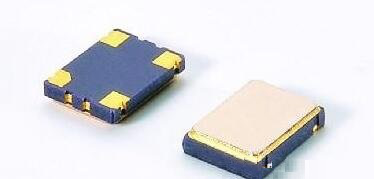“There are many types of crystal oscillators, such as active crystal oscillators, passive crystal oscillators, etc. In this article, the editor will explain the active crystal oscillator, and introduce the pin identification problem of the active crystal oscillator.
“
There are many types of crystal oscillators, such as active crystal oscillators, passive crystal oscillators, etc. In this article, the editor will explain the active crystal oscillator, and introduce the pin identification problem of the active crystal oscillator.

There is a dot marked pin 1, and counterclockwise (pin down) are 2, 3, and 4, respectively.
The usual usage of the active crystal oscillator: one pin is floating, the second pin is grounded, the third pin is connected to the output, and the fourth pin is connected to the voltage.
The active crystal oscillator does not need the internal oscillator of the DSP, the signal quality is good, relatively stable, and the connection method is relatively simple (mainly to filter the power supply, usually a PI-type filter network composed of a capacitor and an Inductor is used, and a small resistor is used at the output end. value of the resistor to filter the signal), no complex configuration circuit is required. Compared with passive crystals, the disadvantage of active crystal oscillators is that the signal level is fixed, and it is necessary to select the appropriate output level, which is less flexible and expensive.

The active crystal oscillator is composed of a right quartz crystal. The reason why the quartz crystal can be used as an oscillator is based on its piezoelectric effect: adding an electric field to the two poles of the crystal will cause mechanical deformation of the crystal; When an alternating voltage is applied, the crystal will generate mechanical vibration, and at the same time, the mechanical deformation and vibration will generate an alternating electric field. Although the voltage of this alternating electric field is extremely weak, its vibration frequency is very stable. When the frequency of the applied alternating voltage is equal to the natural frequency of the wafer (determined by the size and shape of the wafer), the amplitude of the mechanical vibration will increase sharply, a phenomenon called “piezoelectric resonance”.
The establishment and maintenance of the piezoelectric resonance state must be achieved by means of an oscillator circuit. Figure 3 is a series oscillator, a two-stage amplifier composed of transistors T1 and T2, and an LC circuit composed of a quartz crystal XT and a capacitor C2. In this circuit, the quartz crystal is equivalent to an inductor, and C2 is a variable capacitor. Adjusting its capacity can make the circuit enter a resonance state. The oscillator power supply voltage is 5V, and the output waveform is a square wave.
In electronics, circuits containing transistor elements are usually referred to as “active circuits” (such as active speakers, active filters, etc.), while circuits consisting only of RC elements are referred to as “passive circuits”. Crystal oscillators in computers are also divided into passive crystal oscillators and active crystal oscillators. The English name of passive crystal oscillator and active crystal oscillator is different, passive crystal oscillator is crystal (crystal), and active crystal oscillator is called oscillator (oscillator). Passive crystal oscillator is a non-polar component with 2 pins. It needs the help of a clock circuit to generate an oscillating signal and cannot oscillate by itself, so the term “passive crystal oscillator” is not accurate; an active crystal oscillator has 4 pins. It is a complete oscillator, in which in addition to the quartz crystal, there are transistors and resistance-capacitance elements, so the volume is larger.
The frequency stability of quartz crystal oscillators can reach 10^-9/day, or even 10^-11. For example, for a 10MHz oscillator, the frequency change within a day is generally not more than 0.1Hz. Therefore, the crystal oscillator can be regarded as a constant reference frequency source (quartz watches and Electronic watches all use quartz crystals as the reference frequency for timing). From the birth of the PC to the present, a 14.318MHz quartz crystal oscillator has been used as the reference frequency source on the motherboard. In addition to the 14.318MHz crystal oscillator on the motherboard, a crystal oscillator with a frequency of 32.768MHz can also be found, which is used in the real-time clock (RTC) circuit to Display the precise time and date.

Square active crystal pinout:
1. Square, using DIP-8 package, the dot is 1 pin. 1-NC; 4-GND; 5-Output; 8-VCC
2. Rectangular, using DIP-14 package, the dot is 1 pin. 1-NC; 7-GND; 8-Output; 14-VCC
BTW:
1. There are two kinds of power supply, one is TTL, which can only use 5V, and the other is HC, which can be 3.3V/5V
2. There is one sharp corner and three rounded corners on the edge. The sharp corner is one foot, which is consistent with the dots.
Vcc out
NC (dot) GND
The active crystal oscillator is a square or rectangular metal box with four corners. Looking at the nominal side (top), the lower left is empty, the lower right is ground, the upper left is VCC (5V), and the upper right is output. Connect the power to see the waveform with an oscilloscope.
The Links: LM64P89L G150XG01-V2

0 Comments for “Introduction to active crystal oscillator, how to identify active crystal oscillator pins”